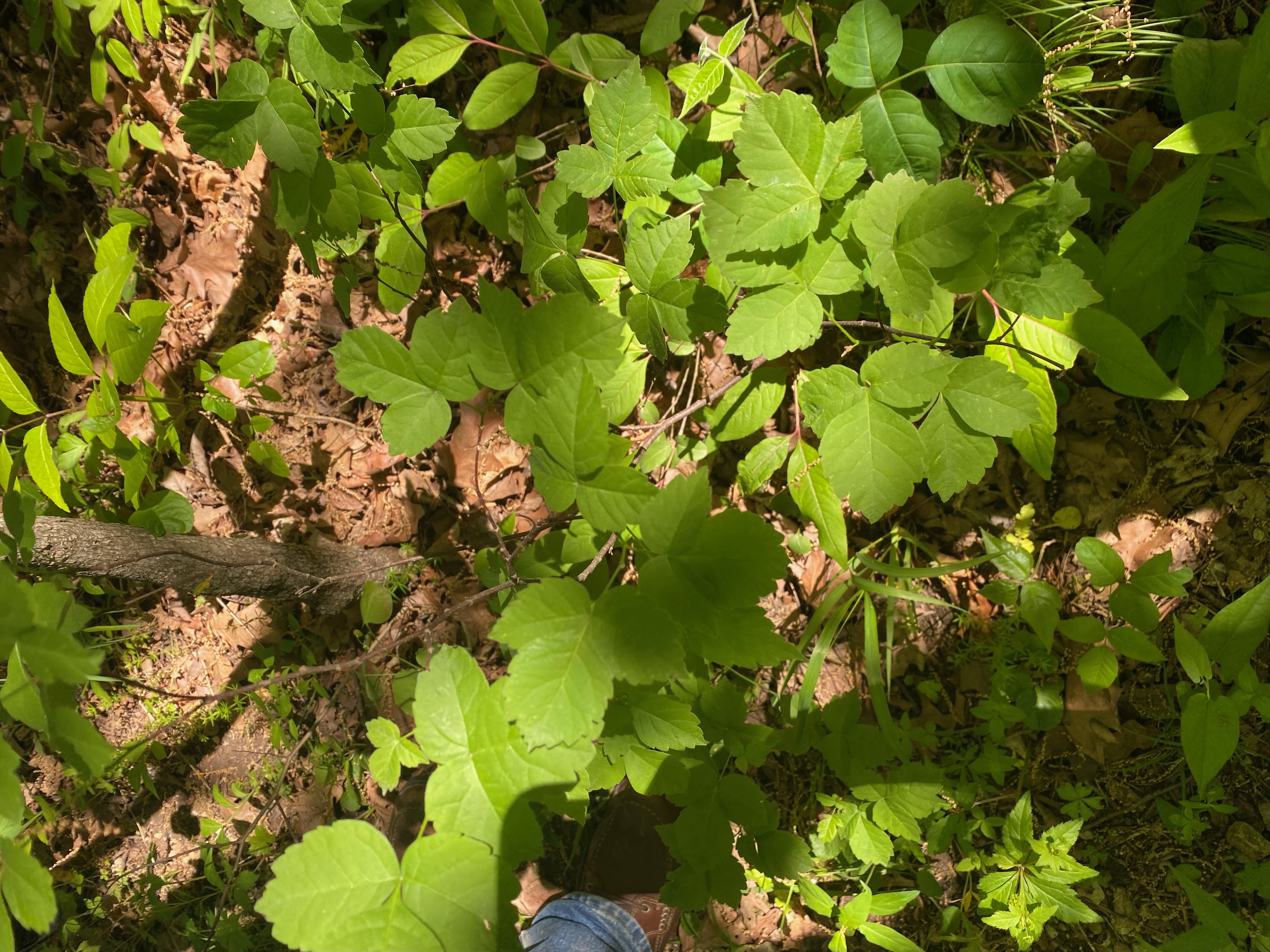On Monday morning, we went on a field trip to Batelle Darby Metro Park. Here we saw two vastly different habitats: a wetland and the other woods. As we walked through these woods, multiple species of trees, plants, and flowers were pointed out to us. We were each asked to document 4 limestone-loving plants, 2 invasive plants, and a special assignment. I was assigned 2 zygomorphic flowers.
One amazing thing about Ohio is how it is divided into two distinct geological landscapes. In the west, limestone is the dominant underlying rock, whereas in the eastern part it’s sandstone and shale. This has caused these areas to both wear differently. Due to Limestone easily being eroded, the western portion has worn flat, whereas the eastern part has deep valleys, wearing down quicker where the resistant sandstone is covering softer shale.
Ohio was originally covered by a layer of limestone, covered by shale, and that shale being covered by sandstone. Due to the pressure of all these rocks, the landscape was slightly tilted, lending to an arch that birthed the Appalachian Mountains. The crest of the Arch was located in what is now Clevland. The Teays River played an important role in eroding western Ohio.
Glacial movements also lend some importance to shaping Ohio’s geological makeup. Due to the steep sandstone in eastern Ohio, the glacier moving from the north, was diverted, splitting Ohio geologically in half and causing major changes as it scraped along Ohio’s surface. As it moved across the western pasr of ohio it deposited till, a mix of boulders, clay, sand and silt. The till depositied in eastern ohio has much less clay and lime than that deposited in the western portion leading to poorley areated soil. In the eastern portion, the soild is very areated so it retains moisture and is very acidic.
There are many species distributed differently across the state. In limestone/limestony substrates trees such as redbud, hackberyy hawthorn, hop hornbeam and red-cedar are able to survive. In high lime/clay rich areas beech trees, sugar maples, res oak, shagbark hickory’s and white oaks are able to take root and thrive. In the sandstone hill of eastern Ohio Chestnut oak, sourwood, scrub pine, pitch pine and hemlock grow.
Some plants have specific distributions. The Sweet buckeye has been theriozed to have had issues with repopulation, restricting it to areas outside of the glacial boundry. Hemlock in another plant with an odd distribution, found in both eastern ohio and north of the glacial boundry. Its mainly distributed in cool, moist areas. While both these plants are present in the unglacieted eastern portion of Ohio, Hemlock extends much furthure north than the Sweet buckeye. Rhododendron is a plant that is distributed south of the glacer bounary in ohio, but not throughout the unglaciated parts. Its therozied that this it due to the glacier blocking drainage of the Teays river.
As we learned lots about the different geological distributions in ohio, we were able to explore portions of the Limestone dominated west. We encounterd some unique plant species along the way.
Two Zygomorphic Flowers:
Common Blue Violet
(Viola papilonacea)
The common blue violet is widly distriuted, found often in moist medows and forests. They often have five petals with the lower ones tilted at the base. They have basal, heartshaped leaves that are slighly lobed.
For a fun fact, this lovely blue violet is the state flower of three US states, New Jersey, Rhode Island and Illinois https://kids.kiddle.co/Common_blue_violet.
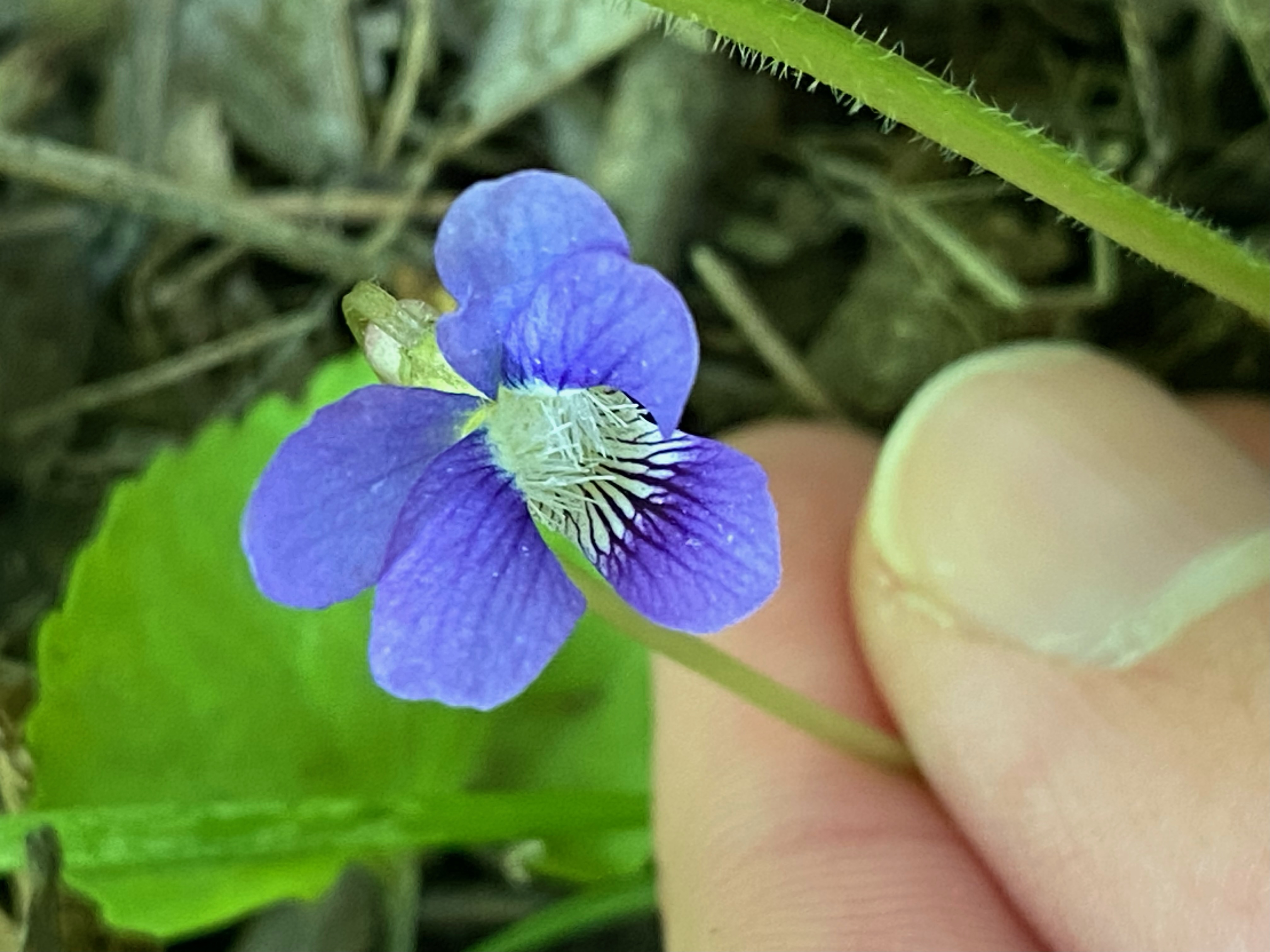
Cream Violet
(Viola striata)
These are woodland plants that often bloom in the spring. They are found in low woods and moist meadows from New York and Wisconsin south. They have heart shaped , alternatively arranged leaves and very long stalks.
violets when they first open are edible. They are bland but can be used for food decoration. You can read more about them here https://justfunfacts.com/interesting-facts-about-violets/.
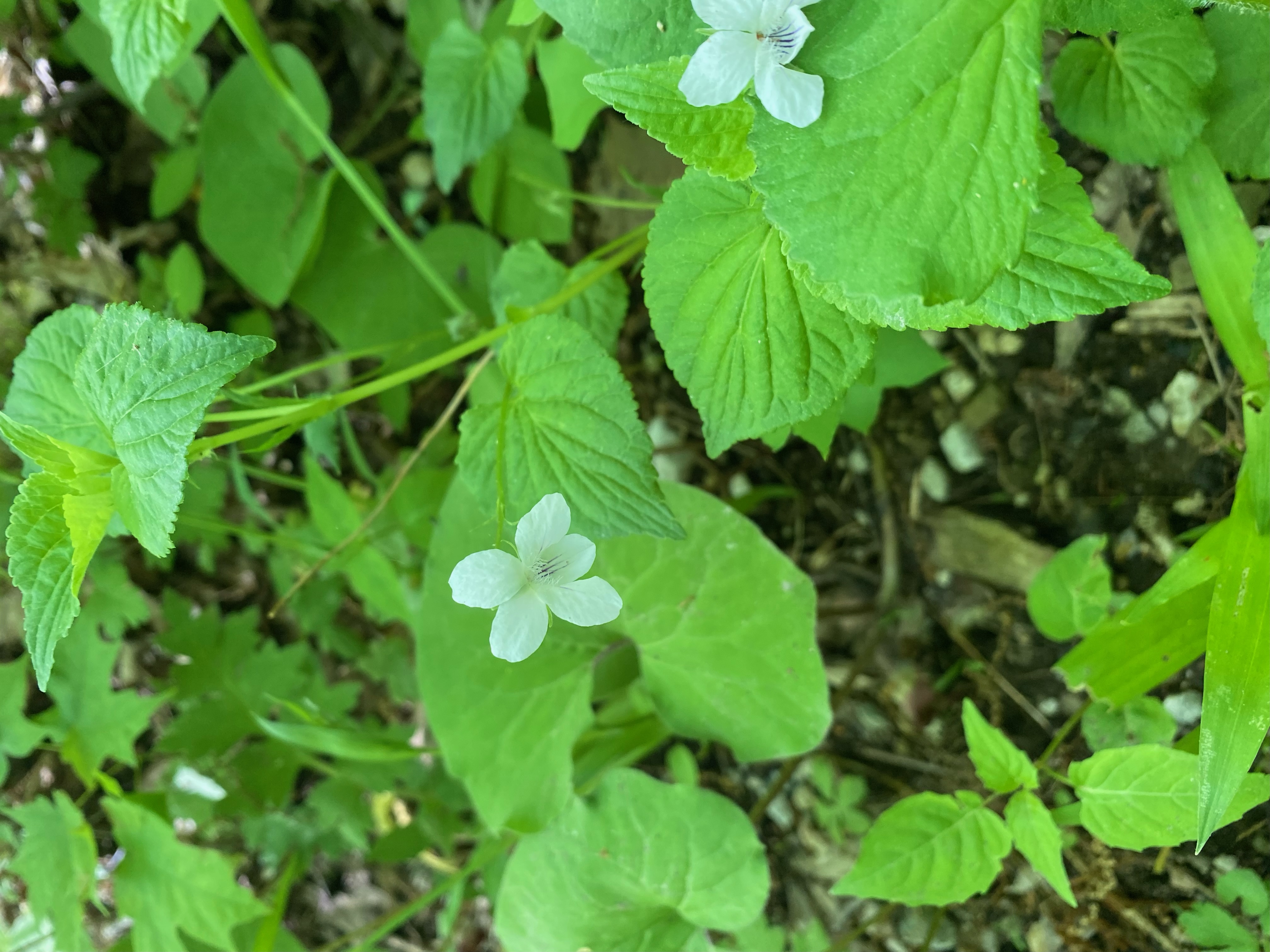
This violet was tucked within the soft soil of the forest floor. Its leaves were heart-shaped, alternately arranged, and toothed. The petals of the leaves were irregular with a few purple lines on one of the petals. The reproductive parts within the flower were very long and hairy.
Two Invasive Species
Japanese Honeysuckle
(Lonicera japonica)
The Japanese Honeysuckle is an invasive species that is found ferom massachusus to kansas and south. It was originally introduced in the 1800’s ornimentally ( japanese-honeysuckle) but quickly began to overtake and crowd out the native population. Now you can see it overtaking native species all along roadsides across the eastern US.
It has white irregular flowers with opposite, entire leaves.
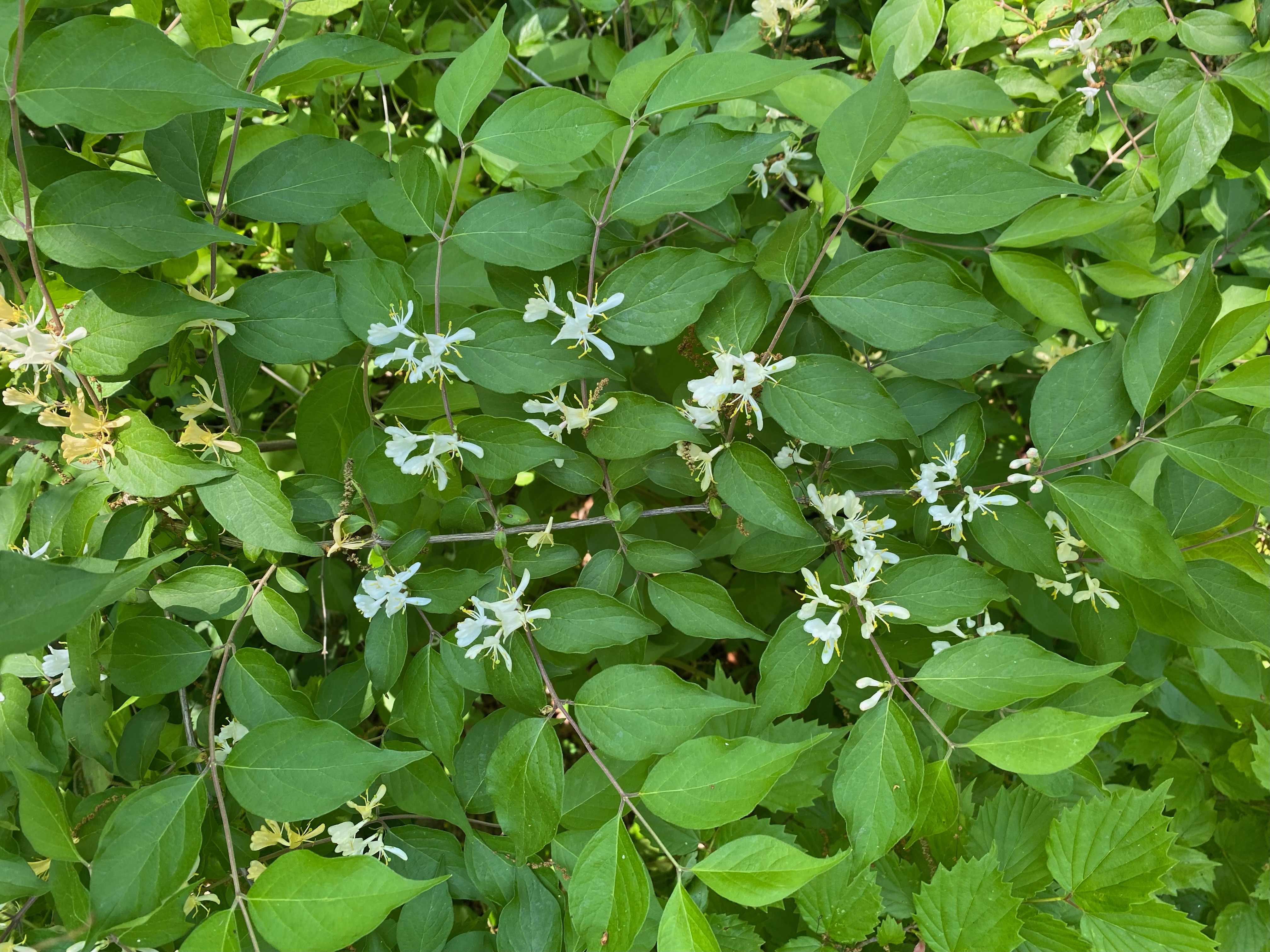
Garlic Mustard
(Alliaria officinalis)
Garlic Mustard is a small white wild flowe tht is found along roadsides and in open woods. the leaves are slightly heart thated, alternate and toothed. it smells like garlic when it is crushed. It is an invasive species introduced to long island in 1868 for medical uses, but it quickly moved and invaded other parts of the US, 38 states to be exact garlic-mustard.htm.
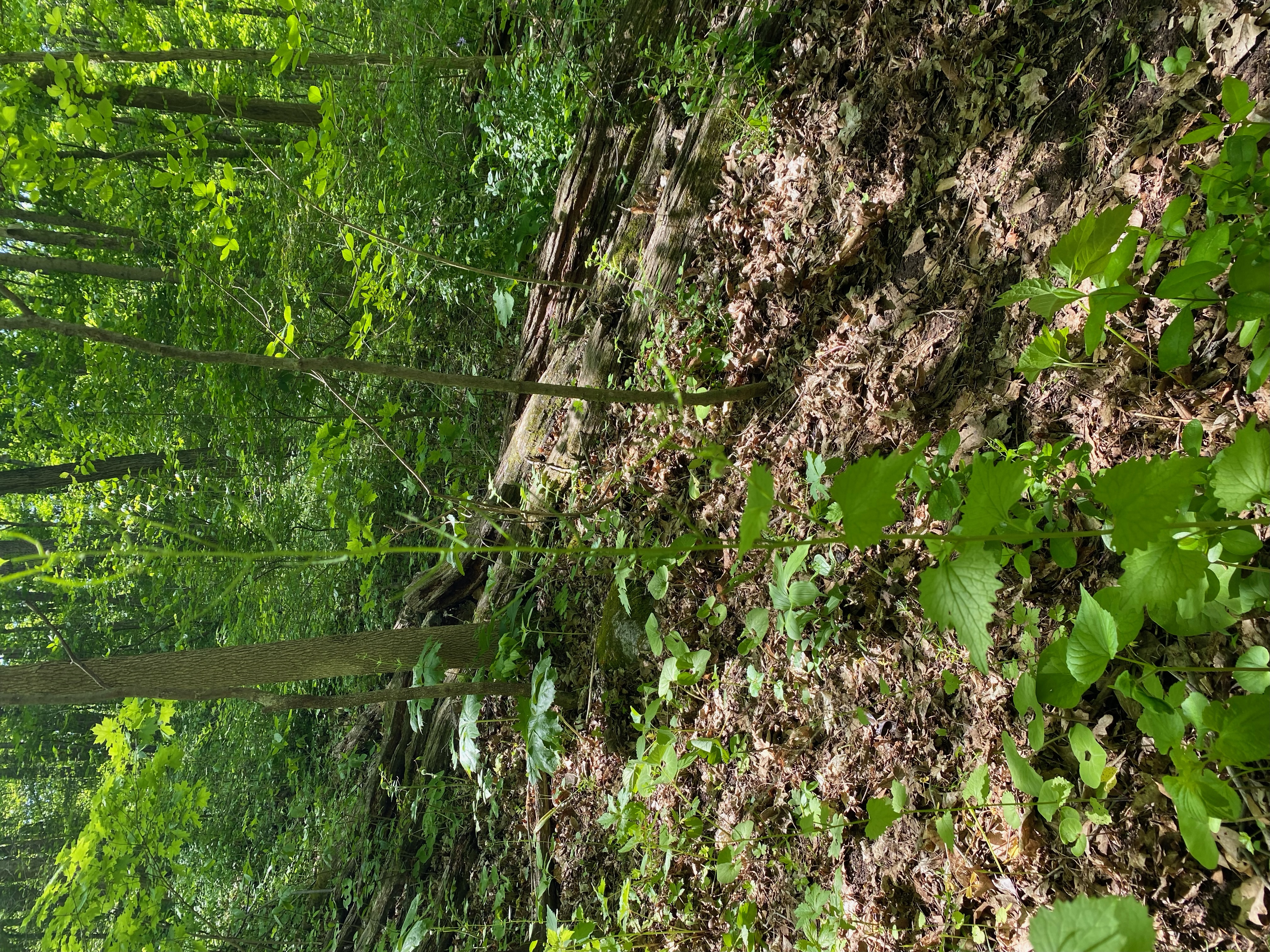
4 Calciphiles
American Hackberry
(Celtis Occidentalis)
The American Hackberry is a Calciphile found in the woods and open places, especially more southwest. Its often found along floodplains with limestone bedrock. It has simple alternanate leaves that are fan veined and coarsely toothed.
when researching this tree, I learned that it’s main claim to fame is it’s resilience. It tolerate droughts well and is able to quickly grow back after fires. This hardy tree is also the only host for the hackberry emperor butterfly https://funfactsabouttrees430792891.wordpress.com/2020/07/21/hackberry-yes-hackberry/.
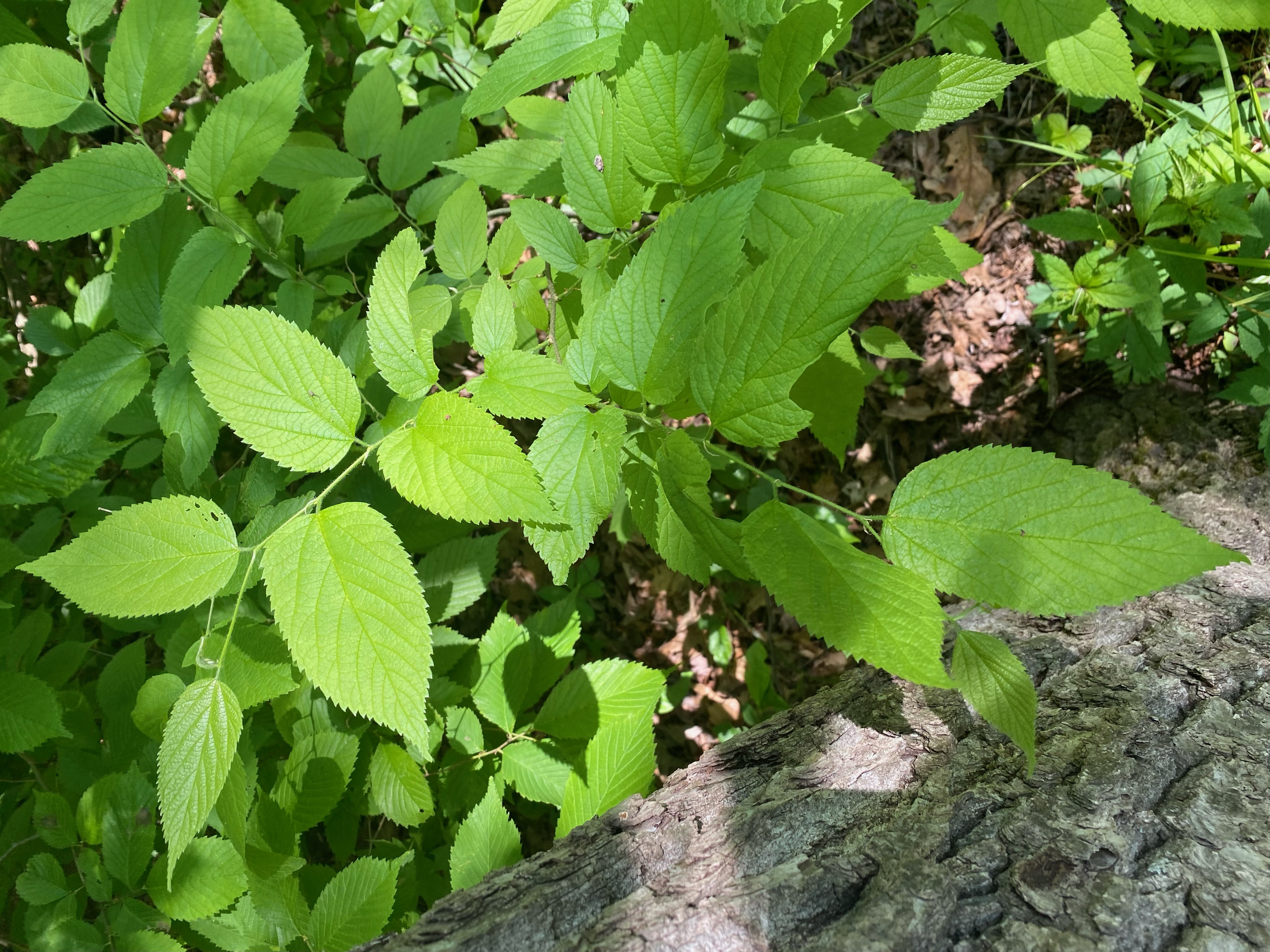
Blue Ash
(Fraxinus quadrangulata)
Blue ash is found in upland woods.Its found along the glacier path where there are high lime tills as well as in the Erie islands. It has oppositely arranged coumpound leaves. Its leaflets are toothed.
Blue Ash gets its name from a substance it produces, that turns blue when exposed to air https://www.uky.edu/hort/Blue-Ash.
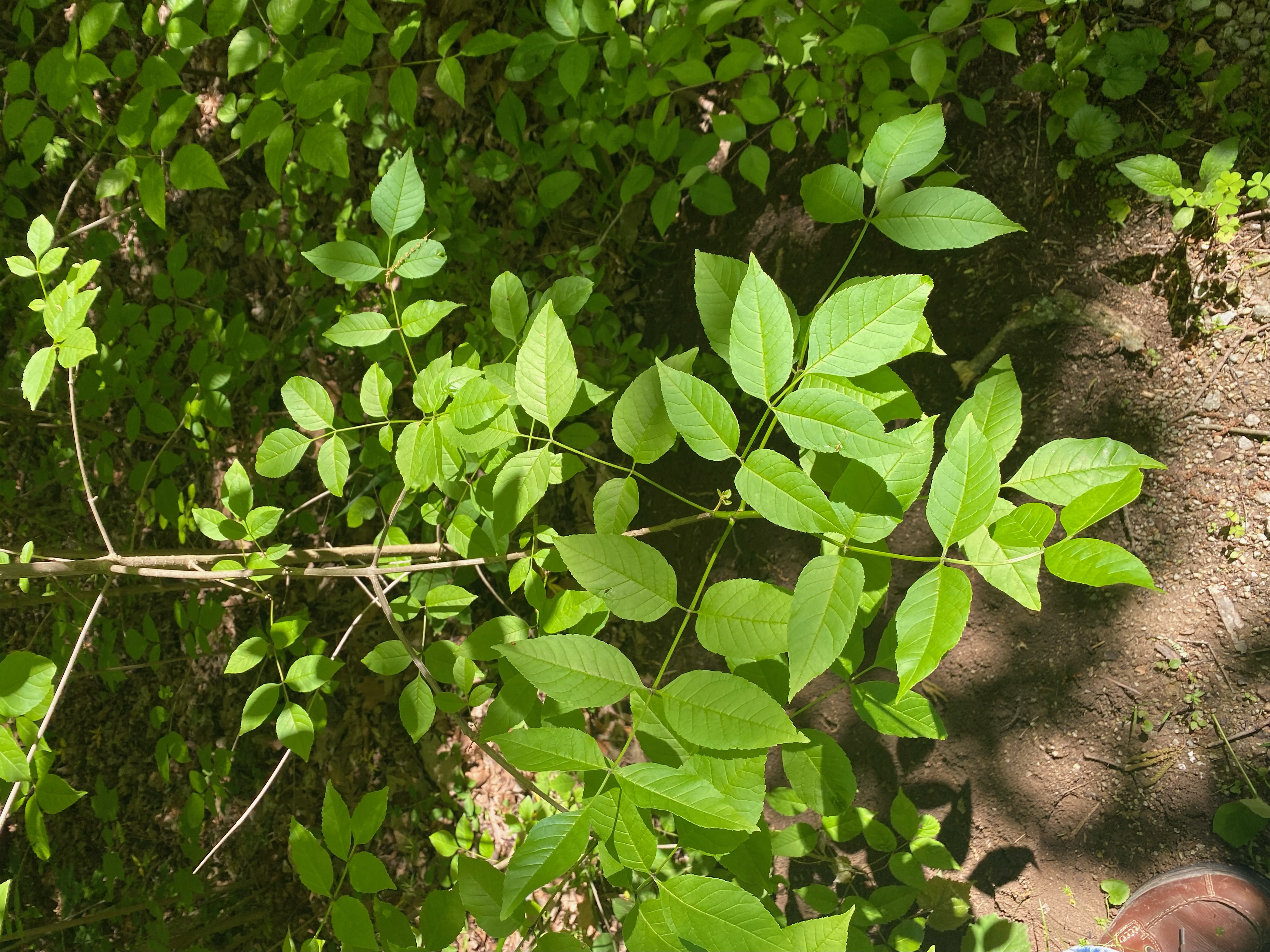
Chinquapin Oak
(Quercus muehlenbergii)
This tree is found in dry woods with limestone soils. its deposited in areas within the glacial boundry. It has simple, alternate leaves that are sharply toothed. Its bark is flaky and light grey.
I learned that this tree was used medicinally by Cherokee Indians to treat minor illnesses https://nfs.unl.edu/woody-plants/chinquapin-oak.

Fragrant Sumac
(Rhus aromatic)
Fragrant Sumac is found in rocky and sandy limestony soils. Form the article, I learned that it’s often found in areas where the limestone is very shallow. It has toothed leaflets and alternately arranged compound leaves.
The fragrant Sumac also has many medical uses. It’s been used to treat headaches and stomachaches. It can also be used to treat fevers and has been theorized to help with late onset diabetes https://www.healthbenefitstimes.com/fragrant-sumac/.
